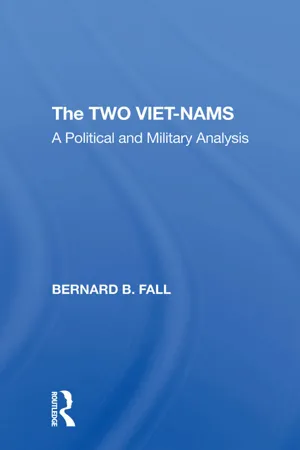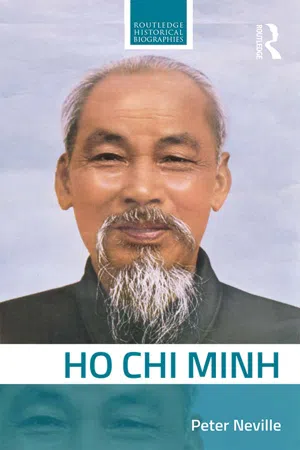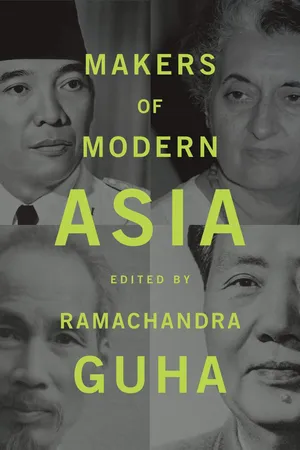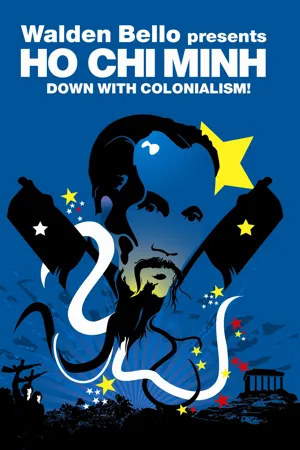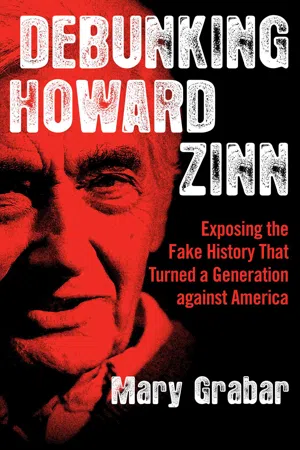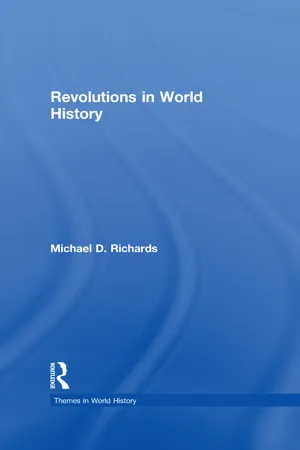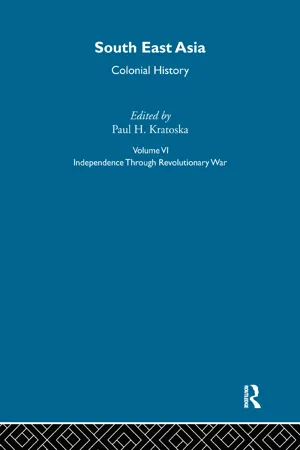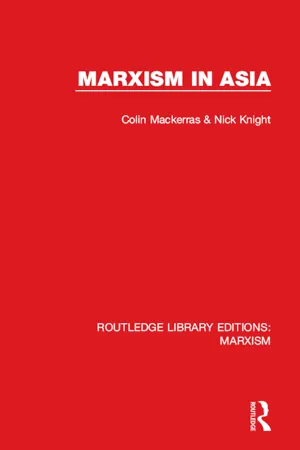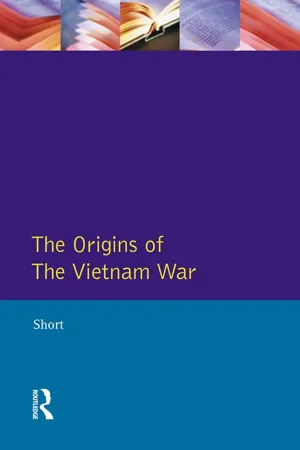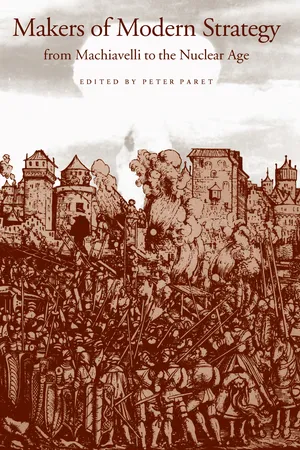History
Ho Chi Minh
Ho Chi Minh was a Vietnamese communist revolutionary leader who played a key role in the establishment of the Democratic Republic of Vietnam in 1945 and later became the President of North Vietnam. He led the Viet Minh independence movement against French colonial rule and the Vietnam War against the United States. Ho Chi Minh is widely regarded as the father of modern Vietnam.
Written by Perlego with AI-assistance
Related key terms
10 Key excerpts on "Ho Chi Minh"
- eBook - ePub
The Two Vietnams
A Political And Military Analysis
- Bernard Fall(Author)
- 2019(Publication Date)
- Routledge(Publisher)
The Rise of Ho Chi MinhIT is indicative of the depth of the gap in Western knowledge of Vietnamese affairs that such a major personality of the Communist world as Ho Chi Minh has not thus far been subjected to any solid biographical research.1 Unlike many other Communist leaders today, Ho still seems to delight in cultivating an air of mystery about himself even on such prosaic details as his exact birth date. A perusal of a dozen Communist sources on his background will produce at least ten different birth names and as many as six or seven birth dates, and even less is known about his immediate family and those other little details about a man's life that are meaningless per se but so important in fleshing out the personage. In the case of his South Vietnamese rival, Ngo Dinh Diem's large family of brothers and other relatives became a major factor of the political equation. But Ho Chi Minh is presented by his propagandists more or less as if his life had begun in 1920, when he officially became a Communist, and as if he had never had any personal life since. And his non-Communist biographers until now simply lacked the minimal amount of firsthand information to be able to draw some valid conclusions.Both northern and southern apologists for their respective leaders note, however, one essential trait their chiefs share: They are both personally lonely. Both are bachelors and both are thus presented as "fathers" of their country, but since the "father image in Viet-Nam is too much wrapped up in the old mandarinal tradition—which Ngo accepts but Ho rejects—the latter is presented to his public as "uncle" instead, i.e., as a man who still commands respect but not with the forbidding sternness of a father. This difference in "image" is clearly reflected in their propaganda photographs: Ngo appears either in full traditional mandarin's dress or in the snow-white Western business suit of the French colonial tradition; Ho is shown either in the "Mao Tse-tung suit" of his party or in the dark peasant cu-nao - eBook - ePub
- Peter Neville(Author)
- 2018(Publication Date)
- Routledge(Publisher)
1 the presence on postage stamps and currency, but what we know of him suggests that he would have rejected the deification presented by his mausoleum in Hanoi. It was his Politburo colleagues who insisted on giving Ho this peculiarly communist form of adulation. Foreign visitors to Hanoi after Ho’s death were invariably taken to see the embalmed body of the great man in his mausoleum. Carefully kept apart from Vietnamese visitors, they waited for their turn, with the columns of young Vietnamese schoolchildren with their red scarves and white shirts. Historians suggest that the Party needed to preserve the image of a saintly, dedicated Ho just as the Soviet Communist Party needed to deify Lenin, and the People’s Republic of China needed to elevate Mao Zedong to godlike status. Probity and rectitude, these were the revolutionary virtues exemplified by Ho, along with love of his country.The evolution of a leader
What is fascinating about Ho Chi Minh is the way in which diverse strands in his life came together in the creation of the man who came to personify Vietnam. His background suggested that he might follow the orthodox path of the son of a mandarin from the scholar-gentry class in Central Vietnam. He did not, perhaps as a result of a random family disaster in 1909, when his mandarin father beat a man to death and destroyed his own career.2 This is speculation, as there is already evidence that Ho had nationalist inclinations, and his father Nguyen Sinh Sac, who knew the great Vietnamese nationalist Phan Boi Chau, certainly did.There were Vietnamese who looked eastwards to Japan for encouragement, but Ho, with his smattering of French culture, looked west and arrived in Marseilles in 1911. The years in France and many other places, certainly in Britain and possibly the United States too, were years of evolution, with Ho as a seaman turning up all over Europe and Africa, and working variously as a boiler man, chef and sweeper-up of snow. Ho was endlessly curious about other lands, while never forgetting his Vietnamese roots. Always, regardless of his known respect for French culture, Ho had at his core a deep resentment of French colonialism which had humiliated his fellow countrymen and women since the middle of the nineteenth century. Freedom from the French yoke was essential, and Ho (then Nguyen Ai Quoc) first appeared on the international stage as a petitioner to the Great Powers at the 1919 Versailles Conference. Predictably, the pleas of Ho and his colleagues were ignored by the United States, Britain and France. This was to be a common feature of Ho’s life. Little Vietnam was regarded with condescension by colonial powers (the United States effectively ruled the Philippines). - eBook - ePub
- Ramachandra Guha, Ramachandra Guha(Authors)
- 2014(Publication Date)
- Belknap Press(Publisher)
66 Yet because he never had the chance to serve as a peacetime leader, he was deprived of the opportunity to prove his sincerity or provide a model of “open nationalism” for the new century. That he also had faith in the promise of Marxism to create an egalitarian, just society cannot be doubted. But his desire to unify all Vietnamese patriots into one movement was far stronger than his attachment to Communist dogma; he preferred peaceful political transformation to revolutionary violence, in strong contrast to Mao Zedong’s outlook.Since 1992 Ho Chi Minh has been promoted to become Vietnam’s leading ideologue, the originator of the latest national ideology: “Ho Chi Minh Thought.” While Marxism-Leninism is no longer the guiding ideology of Vietnamese economic life, the VCP, like the Chinese Communist Party, still clings to its identity as a Marxist organization. But at the same time, “Ho Chi Minh Thought” has become a key element in the party’s efforts to justify its dominant role. Since the collapse of the Socialist Bloc, Ho’s every action and utterance have been scrutinized in order to establish the fundamentals of this new ideology, in spite of the fact that Ho himself never presumed to be an ideologist. Party experts write booklets on Ho’s attitude to every aspect of life—from women and children to literature and military strategy. Unfortunately, this approach leads to an amorphous body of ideas, as it does not discriminate between scripted political speeches and Ho’s interventions at closed meetings. The Vietnamese Communist Party’s claims to legitimacy continue to rely on their Ho Chi Minh lineage. In future the party leadership may realize that in order to restore Ho’s relevance for a new generation, they will have to open up a more honest examination of his political career and the battles that he waged. - eBook - ePub
- Ho Chi Minh(Author)
- 2020(Publication Date)
- Verso(Publisher)
INTRODUCTIONHo Chi Minh: THECOMMUNIST AS NATIONALIST
Walden Bello
Ho Chi Minh was a legend in his time, and like all legends, he manifested a variety of personae to people who worked with him, met him, or studied him. To the Soviet Premier Nikita Khrushchev, Ho was a living ‘saint of communism’:In contrast, for Sophie Quinn-Judge – author of the best study of Ho’s activities from 1919 to 1941 – although Ho was motivated ‘by sincere patriotism and a deep resentment of French imperialism’,I have met many people in the course of my political career, but none has made such a particular impression on me. Believers often talk of the Apostles. Well, through his way of living and his influence over his peers, Ho Chi Minh was exactly comparable to these ‘holy apostles’. An apostle of the Revolution. I will never forget that gleam of purity and sincerity in his eyes. His sincerity was that of an incorruptible communist and his purity that of a man totally devoted to his cause, in his principles and in his actions.1Ruth Fischer, a contemporary and colleague in the Communist International, offers yet another view, more nuanced than those of Khrushchev and Quinn-Judge:he was not some sort of communist holy man. He lived with women at various times, made compromises and infiltrated other nationalist parties. He was not always straightforward – in many situations he would have regarded it foolhardy to be honest about his political beliefs. The depth of his attachment to communism is difficult to gauge – the one thing one can say is that he had little interest in dogma. The path he followed was often chosen from a range of options narrowed by events outside his control.2Amid these seasoned revolutionaries and rigid intellectuals, he struck a delightful note of goodness and simplicity. He seemed to stand for mere common decency – though he was cleverer than he let on – and it was his well earned good name which saved him from being caught up in internal conflicts. Also, he was temperamentally far more inclined strongly toward action than toward doctrinal debates. He was always an empiricist within the movement. But none of this detracted from his colleagues’ regard for him, and his prestige was considerable.3 - eBook - ePub
Debunking Howard Zinn
Exposing the Fake History That Turned a Generation against America
- Mary Grabar(Author)
- 2019(Publication Date)
- Regnery History(Publisher)
Morris in the Weekly Standard as “nationalism as a temporary expedient in the struggle against ‘imperialism.’ ” In fact, Vietnamese Communists adhered to “a Marxist-Leninist view of international affairs” and rejected nationalism “as an ideology of the feudal and capitalist social classes.” 8 Ruth Fischer, a former Communist German revolutionary who knew Ho from their time in Moscow during the 1920s, described him as “the model of the disciplined Communist.’ ” 9 Ho spent the 1930s in China and the USSR. Ho’s work “benefitted” from a new political mood, as “the Soviet Union and Western democracies cooperated against the common threat of global fascism.” From 1936-1939, “a Popular Front government in Paris allowed Communist parties in the colonies an increased measure of freedom.” 10 Although “he witnessed the arrests and killings of his Bolshevik and Comintern comrades, including many fellow Vietnamese Communists,” by the Soviets, Ho remained a dedicated Stalinist. 11 “By mid-June 1940,” Logevall explains, “France stood on the brink of defeat at the hands of invading Nazi German forces, Japan, on friendly terms with Germany and sensing an opportunity to expand southward, prepared to seize French Indochina, and Ho Chi Minh, meeting with associates in southern China, said he saw ‘a very favorable opportunity for the Vietnamese revolution. . . .’ ” 12 In the spring of 1941, Ho Chi Minh returned to Vietnam, set up camp, and held a plenary meeting of the Indochinese Communist Party’s Central Committee. In July, Japanese bases were established in southern Indochina. On July 24, the White House learned that “Japanese warships had appeared off Cam Ranh Bay.” Soon thereafter came the U.S. embargo of Japan, and then Japan’s attack on Pearl Harbor on December 7 - eBook - ePub
- Michael D. Richards(Author)
- 2004(Publication Date)
- Routledge(Publisher)
After the British released Nyugen Ai Quoc from custody in 1932, he went into exile in the Soviet Union until 1938. Returning that year to China, he began to make connections again with the Vietnamese revolutionary movement. In 1940, after the Germans defeated the French, he realized the importance of returning to Indochina. In 1941 he moved to Pac Bo in the northern part of Vietnam. There, at the Eight Plenum of the Indochinese Communist Party in May, he and his associates founded the Vietminh Front (also known as the League for the Independence of Vietnam or Viet Nam Doc Lap Dong Minh Hoi). The emphasis of the Vietminh program was on national liberation from the French colonial regime and the Japanese occupation forces. The program also touched on what it called “antifeudalism” and social change. This, however, was a delicate area in that the Vietminh wanted to attract wide support. The Vietminh wanted to appeal not only to landless laborers and poor peasants but also to the better-off peasants and even to “patriotic landlords.” Then, too, they wanted to enlist the nationalistic middle classes and the intelligentsia. Too much emphasis on social justice would cost them the support of those whose chief aim was national liberation. Policies that had been criticized in the early 1930s were now accepted and Ho Chi Minh, “Ho the Bringer of Light,” as he had begun to call himself, emerged as the leading figure in the Vietminh.The Vietminh in the next few years followed the lead of the Chinese Communists. Cadres, for example, were required to help the peasantry, pay attention to local customs, learn the local languages, and to buy or borrow only what people wanted to sell or lend. The Vietminh made a concerted effort to establish good relations with the many minority people in the area. They also established a working relationship with American OSS agents (Office of Strategic Services—the forerunner of the CIA) by providing some military intelligence and helping to rescue downed American pilots. In return, the OSS provided supplies and equipment. Ho possibly also hoped for American support against the return of the French when the time came. - eBook - ePub
- Paul Kratoska(Author)
- 2021(Publication Date)
- Routledge(Publisher)
7 Viet Minh-sponsored local committees sprang up in Tonkin, Annam, and Cochinchina. Although it was generally a peaceful revolution there was sporadic violence, particularly in the south against Vietnamese who had held high office or much property under France or whose politics had antagonized local revolutionaries.At Hanoi, the capital of Tonkin and one-time capital of the Indochinese Union, Ho Chi Minh reorganized the National Liberation Committee, bringing in several moderate nationalists, one a Catholic, to form a provisional government. Of its fifteen members, eight belonged to the Viet Minh and five of these were Communists. Bao Dai, who had renounced his title and was known as Citizen Vinh Thuy, was appointed Supreme Political Adviser. On September 2 the new Democratic Republic of Vietnam, claiming authority over Tonkin, Annam, and Cochinchina, issued its declaration of independence. It began with the ringing words of the American Declaration of Independence: “All men are created equal. They are endowed by their creator with certain unalienable rights, and among these are life, liberty and the pursuit of happiness.”In later years, when Frenchmen looked back over the events of 1945, they singled out three happenings to explain their postwar difficulties in Indochina. Vietnamese nationalism long pre-dated the war, but had these three things not occurred, it probably would not have erupted, as it did, into open and far from unsuccessful revolution. First, there was the Japanese coup that brought to an end French rule over Indochina. No matter how far the French administration had come under the thumb of the Japanese before March 1945, it had succeeded in preserving intact at least a formal sovereignty, and the Indochinese peasant did not stop to question whether the power behind his local administrator was centered in Tokyo or in Vichy. After March 9, however, the administrators ceased to be Frenchmen, and the illusion of European supremacy, once shaken, would be hard to reestablish. - eBook - ePub
- Colin Mackerras, Nick Knight(Authors)
- 2015(Publication Date)
- Routledge(Publisher)
6Clearly the central appeal of Leninism to the Vietnamese is its hostility to colonialism and imperialism. The opposition takes its roots from, and also fosters, Vietnamese patriotism as well as the distinct though related factor of nationalism.7 The power of these several spirally and mutually supporting phenomena – hatred of imperialism, patriotism, nationalism – has surprised, alarmed and also defeated successive imperialists such as the French and Americans.Ho Chi Minh is acknowledged as the founder of Vietnamese Marxism-Leninism, but is by no means its only, or even principal contributor to ideology. In theoretical terms Le Duan, Truong Chinh and Vo Nguyen Giap are his equals or superiors. There is indeed a Vietnamese Marxist-Leninist theory which, though initially influenced strongly by China, bears its own characteristic stamp.One of the strengths of Vietnamese Marxism-Leninism, connected with its plurality of really significant and influential ideological leaders, is the relative lack of personality cult. Ho has never been the subject of a cult anything like that of Stalin, Mao or Kim. Correspondingly, Ho has not been debunked after death as have Stalin and Mao.Analysis of Vietnam’s Class AntagonismsAs Vietnam’s communist movement is led by orthodox Marxists, their body of theory begins from a scientific investigation of Vietnamese society and the class antagonisms upon which the revolutionary process is to be based. However, while their methodology may be orthodox, their ‘creative application of Marxist-Leninist theory to Vietnam’s concrete conditions’ yielded quite unconventional results. In part this was because the Vietnamese revolution was the first communist revolution to take place in a completely colonial and semi-feudal country, the first breach of the colonial system of imperialism at its weakest link in Southeast Asia. In part this was also because of the integration of indigenous Vietnamese features into the revolution. - eBook - ePub
- A. Short(Author)
- 2014(Publication Date)
- Routledge(Publisher)
7 And yet, on the matter of whether the colonial or the metropolitan revolution had priority, the statement was equivocal. On the one hand it was essential to try to make the peasant movement more revolutionary in character by uniting the peasants and all the exploited, wherever possible, into Soviets; on the other, the obligation to render the most active assistance to revolutionary-liberation movements rested in the first instance with the workers of the country on which the backward nation was colonially and financially dependent. Making concessions to Lenin's Indian and ‘Asia-First’ opponent, M N Roy, the Commission had, throughout the theses, replaced ‘bourgeois-democratic’ by ‘revolutionary’ and the result was, as one may see in the sixth thesis, that the revolutionary-liberation movement in backward countries or among backward nationalities was invited to determine what forms this alliance should take. Specific targets were to include landlords, large-scale landholders, the reactionary and mediaeval influence of the clergy and Christian missions, and all manifestations or survivals of feudalism.Ho Chi Minh
Even though, by 1920, the world revolution was notably behind schedule the prospect for revolutionaries, national or communist, of alliance with Soviet power in the struggle against world imperialism was dazzling. And for the self-styled Vietnamese patriot, reading these theses in Paris in the French Communist paper l'Humanité , it amounted, in his own account, to a religious conversion. It also approximated, in time, to the formation of the French Communist Party, of which Ho Chi Minh was a founder member, and one may, conveniently and conventionally, present him as a communist from 1920 onwards. The nationalist goes back much earlier, even though, as one of his biographers says, ‘Everything that touches on his life until 1941 is fragmentary, approximate and controversial.8 Born, apparently, in 1890 in Nghe An province of central Vietnam, Ho's father was at least an acquaintance if not friend of the veteran nationalist Phan Boi Chau. His uncle, sister, and brother can all be described as nationalists and although Ho seems to have been attracted at one point to the China of the 1911 Revolution, he chose instead to make his way to France where, having led an intellectually enriched but materially impoverished existence in Paris, he achieved some fame, or notoriety, among his fellow expatriates by attempting to present a list of Vietnamese grievances to Woodrow Wilson and the European statesmen who had gathered in 1919 at Versailles. When he made what may be argued were his next intellectually significant appearances, in 1923 at the Peasant International and in 1924 at the Fifth Congress of the Communist International, he had moved on from the French Communist Party and was now accepted in Russia as a revolutionary of considerable promise. But the matter of priorities had still to be settled and Ho threw his weight unmistakably behind the primacy of colonial revolution. He told the delegates: ‘All of you know that at present the poison and vital capacity of the imperialist viper are concentrated in the colonies rather than in the metropolitan countries.’ And yet, he said, hearing the speeches of comrades from France and Britain he had the impression that they all wanted to kill the serpent by beating its tail.9 - Peter Paret, Gordon A. Craig, Felix Gilbert, Peter Paret, Gordon A. Craig, Felix Gilbert(Authors)
- 2010(Publication Date)
- Princeton University Press(Publisher)
47 Ho's decision was only the first of several critical points when Vietnamese revolutionary policy bore out Mao's stress on the need for care and caution in putting revolutionary theory into practice.After the Japanese seizure of direct control in Indochina, disarming French forces in March 1945, Vietminh headquarters moved closer to the northern capital city of Hanoi, and political operations increased throughout Vietnam in anticipation of an imminent Japanese surrender. When surrender came in August 1945, Ho quickly effected a coup d'état and the Japanese-supported emperor Bao Dai abdicated, giving up his authority to the Vietminh. Giap led his troops into Hanoi and took over the public buildings; banners and leaflets proclaimed a general uprising, and Ho Chi Minh was sworn in as president of the Democratic Republic of Vietnam. This swift change from protracted war to revolutionary coup indicates that Ho was a master—not a slave—of Maoist doctrine.For the next year Ho worked among the several forces at play in Vietnam: the powerful occupation armies of the British in the South and the Nationalist Chinese in the North, the edgy and well-armed returning French troops, and the aroused passion for independence of the Vietnamese, peasants and leaders alike. With ultimate independence as the objective, Ho refused to be diverted by the pleasures of denouncing French colonialists or the pressures for a premature war. While long and difficult negotiations with the French failed to produce the desired result, Ho consolidated his political base, expanded Giap's army, sped the Japanese, the British, and especially the Chinese armies on their way, and tried without success to interest other nations in the plight of Vietnam. His most difficult task was to gauge French political and military intentions and capacities, and to respond effectively to them. Little evidence on this troubled period is available, but it appears that Giap was pressing for the use of force against both domestic and foreign enemies, while Ho sought the broadest possible political appeal based simply on the goal of independence. Arguing with French negotiators seemed preferable to attacking the French army.
Index pages curate the most relevant extracts from our library of academic textbooks. They’ve been created using an in-house natural language model (NLM), each adding context and meaning to key research topics.
